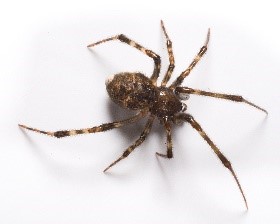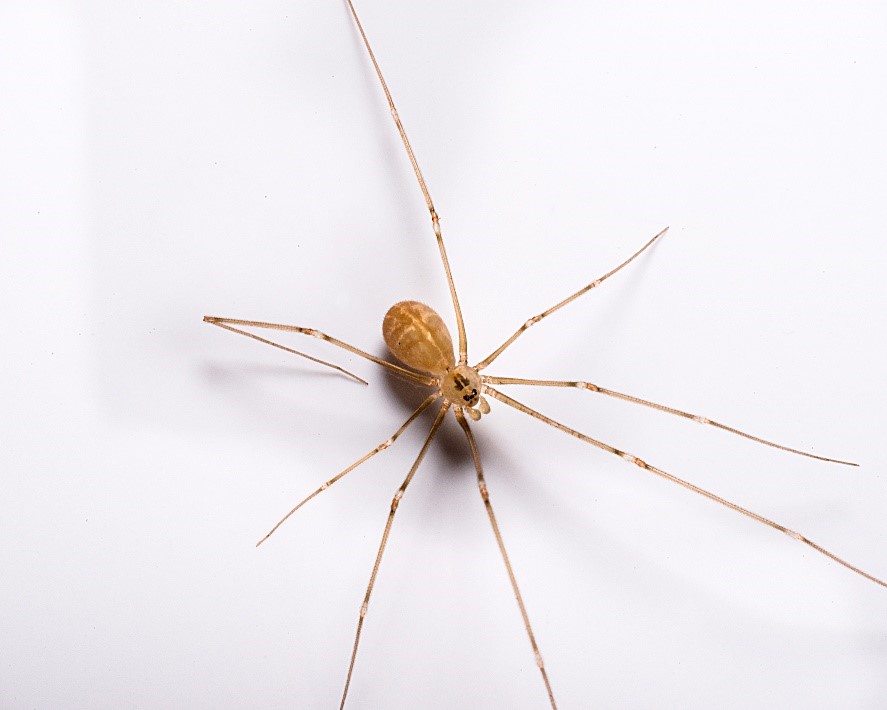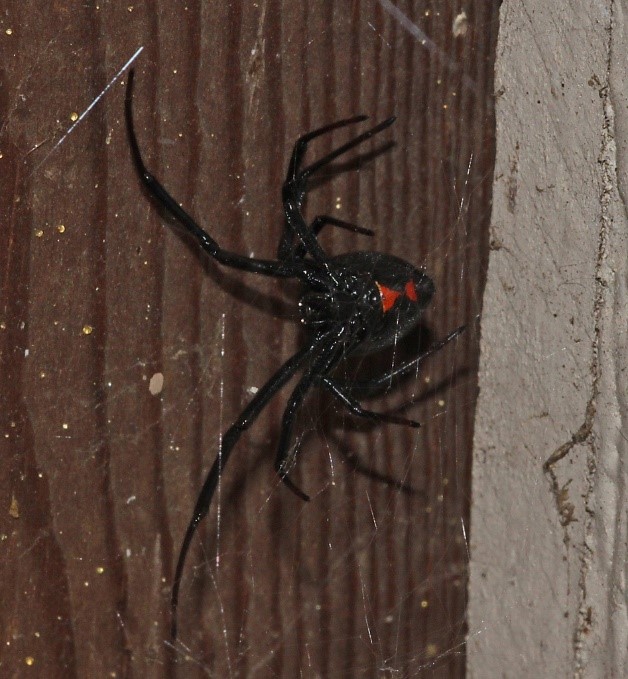
Spiders are arachnids that crawl around garages, crawlspaces, sheds, and living spaces in your home. Webs may pop up in corners of rooms or up on ceilings without any warning. There are a variety of spiders that live in California, most of which can infest residential homes and are not dangerous. The diet of spiders consists of the small insects in your home that are less than appealing. For this reason, some consider spiders to be beneficial. If you can’t stand spiders or if you’re frightened by spiders, we’re here to help!
What kinds of spiders are in California?
Cross-Orb Weaver: The cross orb-weaver is one of the most common species of spider in California. You’ll find them year-round in our area, but it is primarily sighted outdoors in the fall when they reach maturity. They have striped legs, in colors ranging from brown to white, even orange and red, but they all have scattered white markings on their abdomens. Cross orb-weavers tend to leave their egg sacs in rolled-up leaves or under the eaves of buildings. Their webs are vast and intricate and geometric shapes. Luckily, they aren’t aggressive and only bite humans if they feel threatened or provoked.
Long-Legged Sac Spider: The long-legged sac spider has a plain appearance, being mostly white or yellow. These spiders have bitten humans, and people used to think that their venom caused necrosis or the premature death of cells in living tissue. That claim is now proven false, though their bites may still cause mild pain or swelling. Long-legged sac spiders have become accustomed to living in close quarters with humans. Even though they hide during the day and become active at night, these tiny spiders can always be hard to find. A lot of times, people will have encounters with long-legged sac spiders when the spiders rest in clothing that’s folded up in drawers. Can you imagine putting on a long sleeve shirt, only to find a spider inside the arms? Bites are painful but nonlethal.
Common House Spider: Often mistaken for the brown widow spider, the common house spider is much less dangerous. They build their webs in dark, secluded corners of structures, seen year-round. Their light brown/tan colored thin legs allow them to blend into most surroundings. While they are capable of subduing prey larger than themselves (including small lizards), they will only bite humans if they feel threatened. Their bites are nonlethal and will cause localized, temporary minor pain at the site of the bite. House spider bites are not common but not impossible.
Bold Jumping Spider: The bold jumping spider has brown or black coloring and a white or orange triangle on their abdomen. What sets them apart from other common spiders is their jaws, have a lovely iridescent sheen ranging from blue to green and even pink. Adult male bold jumping spiders have much thicker and hairier front legs than females, while juveniles have multi-colored banded legs. Rather than spinning webs, bold jumping spiders stay on the move and catch prey. They rarely bite humans but will do so if they feel threatened or are directly handled. A bold jumping spider bite isn’t lethal and won’t hurt all that much. Weak, localized pain around the bite will occur, but it will quickly subside. Fields, gardens, homes, and even cars can serve as a habitat for these hyper spiders that are almost always on the go. Because bold jumping spiders eat other small insects, they are mostly considered to be a beneficial pest rather than a dangerous or destructive pest.

Long-Bodied Cellar Spider: More commonly known as a “daddy longlegs,” the long-bodied cellar spider has front legs that can grow up to two inches in length. They’re lightly colored, in grey, brown, tan, or white. Their habitations are often in secluded areas like under leaves or rocks, or the attics of homes and other humanmade buildings. They are somewhat large but don’t let their size intimidate you. They pose no serious threat to humans or the structure of your home. It’s actually a myth that daddy longlegs are the most venomous spider in the world that can’t bite humans. Cellar spiders are actually beneficial for natural pest control in your home. Their diet can consist of much larger spiders that you’d prefer not to have crawling around your home, such as wolf spiders!
What attracts spiders to my house?
Pests enter structures through cracks and crevices around windows, doors, around the exterior of homes, ripped screens, uncapped chimneys, and also through holes where utilities enter a structure. For the most part spiders are only in your home because they wandered in unintentionally. Of course, you are more likely to see them in your house if you live in a wooded area or have plants up against your home because spiders like to live in these environments. Any areas where there is moisture, like garages, crawlspaces, and gutters, will attract spiders. Essentially, if insects that spiders prey upon are attracted to the area, spiders will follow.
Are spiders dangerous?
Most spiders in California are harmless to humans and are actually beneficial since they eat other small insects. However, Western black widow spiders can be dangerous if they come into contact with humans.

The Western black widow is the most dangerous spider that may show up in your home. The red or orange hourglass-shaped marking on its abdomen is the best way for you to identify one if you are unlucky enough to find it. Females are usually larger than males, which are white or tan instead of black and hardly ever bite. While a Western black widow bite is not typically fatal, seeking medical assistance is vital to relieving more severe symptoms. Like most spiders, Western black widow spiders hide in dark, quiet areas of your home like in closets, garages, and among clutter. Some have even found them in their toilet or bathtub. If you find a Western black widow spider in your home, call AAI Pest Control for professional removal. It’s not worth the risk for you to interact with it on your own.
How can I get rid of spiders?
Are you finding webs in your home? You can vacuum them up, seal the bag, and immediately dispose of it in an outdoor trash receptacle. The best way to get rid of spiders is to first, determine what kind of spider you see. Is it a venomous spider? Don’t touch it. Call the professionals at AAI Pest Control and don’t risk getting bitten. The best way to protect your home against spiders is to prevent them from entering in the first place.
How can I prevent spiders from getting into my house?
Spiders are very small, so there’s no foolproof way to prevent 100% of spiders from getting into your home. However, there are some steps that you can take on your own to prevent the likelihood of an infestation. Make sure to keep all vegetation, woodpiles, and clutter away from the exterior of your home because they are all ideal spider environments. Also avoid the use of landscaping materials such as riverbed rock as the rounded rocks create a damp cool environment that is favorable to the sorts of insects that spiders often eat. Switching to yellow (sodium vapor) lights can also reduce the number of insects attracted to your home. Lastly, you will want to keep your home as well sealed and free of moisture as possible. Accordingly, you will want to seal up gaps around windows and doors and any other entry points or cracks.
If you want to get rid of the spiders in your home or if you are looking to prevent spider infestations in your home, contact AAI Pest Control! We have a variety of spider control services that fit your needs. Call us or fill out the contact form on this page to get started!
What Are Spiders Professional Pest Control Services in Tracy CA?
Serving Northern California
